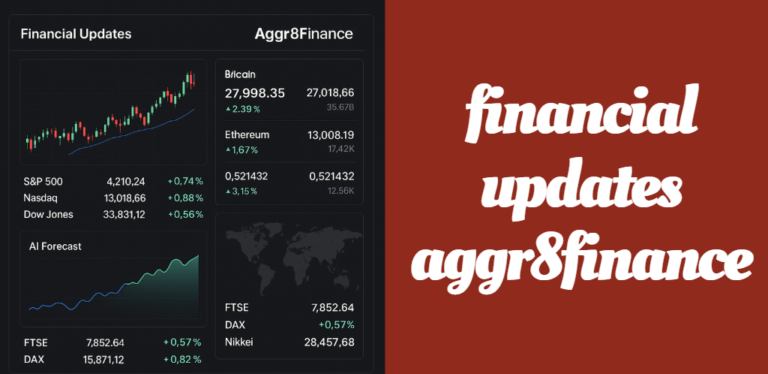Elevate Your Efficiency with vhsgjqm: A Modern Blueprint for Innovation and Growth
Businesses across industries are increasingly turning to forward-thinking frameworks to streamline operations and boost performance. Vhsgjqm is one such model—one that helps organizations manage complex workflows, automate routine tasks, and make data-driven decisions that translate into measurable results.
Whether you are a business leader or a technology enthusiast, understanding the mechanisms behind vhsgjqm can empower you to design more agile and innovative operations.
Understanding vhsgjqm
Defining vhsgjqm
Vhsgjqm is a strategic framework developed to improve organizational efficiency through methodical process optimization and robust data integration. At its core, vhsgjqm facilitates smart automation, fosters interdisciplinary collaboration, and ensures that decision-making is anchored in actionable analytics.
By bridging technological advancements with practical business needs, vhsgjqm serves as a catalyst for transforming complex operations into streamlined workflows.
History and Evolution
The genesis of vhsgjqm can be traced back to the early 2000s, when businesses began exploring digital transformation as a means to enhance productivity. Initially adopted by a select group of forward-thinking companies, the framework has since evolved with the advent of advanced analytics, cloud computing, and automation tools.
Over the years, continuous refinement has led to a model that not only adapts to emerging technological trends but also integrates seamlessly into diverse business environments.
Core Principles and Methodologies
Fundamental Concepts
At the heart of vhsgjqm lie several fundamental principles that drive its effectiveness. The framework emphasizes innovation—encouraging organizations to seek creative solutions to operational challenges—and adaptability, allowing systems to evolve in response to market dynamics.
Furthermore, vhsgjqm stresses the importance of data integration; combining multiple data sources provides a unified view that aids in making informed decisions. Lastly, scalability is a key aspect, ensuring that the model can grow alongside an organization without losing its effectiveness.
Essential Components
To fully leverage vhsgjqm, it is important to understand its core components. These elements work collectively to enhance performance:
- Data Analytics: Real-time insights enable decision-makers to identify trends and adjust strategies promptly.
- Automation: Streamlined processes reduce manual errors and free up resources for more strategic tasks.
- User Engagement: Interfaces designed for ease of use encourage effective collaboration across all organizational levels.
- Scalability: A flexible architecture allows the framework to expand as business needs increase.
- Continuous Improvement: Feedback mechanisms support ongoing refinement and optimization.
The integration of these components is best illustrated in the following table:
| Component | Role in vhsgjqm |
|---|---|
| Data Analytics | Provides actionable insights and supports real-time decision-making |
| Automation | Simplifies repetitive tasks and enhances overall operational efficiency |
| User Engagement | Ensures intuitive interfaces for seamless collaboration |
| Scalability | Adapts to business growth and evolving operational requirements |
| Continuous Improvement | Encourages ongoing feedback and iterative process optimization |
How vhsgjqm Works
Methodology and Implementation
Implementing vhsgjqm involves a systematic approach that begins with a thorough audit of existing workflows. Organizations first analyze current operational bottlenecks and set clear improvement objectives.
The framework then integrates automated systems and analytical tools that work together to streamline workflows. The process is dynamic, allowing businesses to recalibrate their strategies based on real-time performance metrics.
Tools and Technologies
Modern deployment of vhsgjqm is supported by a range of technological tools. For instance, advanced project management software, automated reporting systems, and custom API integrations are instrumental in the framework’s operation. These tools not only facilitate smooth data integration but also enhance user engagement and provide a scalable environment for growth.
Examples of such tools include real-time dashboards that display key performance indicators, automated data collection platforms, and communication software that boosts collaborative efforts. By incorporating these technologies, vhsgjqm ensures that operations remain efficient and adaptable.
Real-World Applications and Use Cases
Industry Applications
Vhsgjqm is versatile and applicable across various sectors. In manufacturing, it helps streamline production processes and minimize waste through optimized workflows. In healthcare, the framework improves patient management systems by automating administrative tasks and ensuring data accuracy.
Financial institutions benefit from its data-driven decision-making tools, while retail businesses use its insights to enhance inventory control and customer engagement.
Practical Benefits
Organizations that have adopted vhsgjqm report significant improvements in efficiency and productivity. Companies have experienced measurable cost savings through reduced operational redundancies and streamlined resource allocation.
These benefits enable businesses to redirect saved resources towards innovation and growth, reinforcing the competitive advantage provided by the framework.
Implementation Strategies
Getting Started with vhsgjqm
Embarking on the vhsgjqm journey begins with evaluating your current systems and identifying areas ripe for improvement. Organizations should conduct a detailed audit to pinpoint inefficiencies and then create a tailored implementation plan.
The plan includes setting clear goals, defining timelines, and assigning responsibilities among team members. Such a structured approach lays the foundation for a successful integration of vhsgjqm.
Planning and Training
One of the essential steps in deploying vhsgjqm is to invest in comprehensive training sessions. Educating employees about the new framework ensures a smooth transition and boosts overall adoption.
Workshops, seminars, and hands-on tutorials can be instrumental in demystifying complex aspects of the framework. Equally important is continuous feedback; maintaining open channels of communication helps fine-tune the framework to suit the organization’s unique needs.
Overcoming Challenges
Despite its many advantages, integrating vhsgjqm may come with challenges—such as resistance to change and technical integration issues. Overcoming these hurdles requires robust leadership and a dedicated change-management strategy.
Engage employees early, demonstrate tangible benefits, and provide the necessary support to ensure the transition is as smooth as possible.
Benefits and ROI of vhsgjqm
Efficiency Gains and Cost Reduction
The integration of vhsgjqm drives significant efficiency gains. By automating routine tasks and streamlining workflows, businesses notice reduced turnaround times and fewer errors. This efficiency translates directly into cost savings, as resources are better allocated and operational waste is minimized.
Scalability and Competitive Edge
A remarkable advantage of vhsgjqm is its scalability. Whether you are a small business or a large enterprise, the framework adapts to meet your needs. As markets evolve, businesses employing vhsgjqm are better positioned to respond swiftly and maintain a competitive edge through data-driven decision-making.
Enhanced Collaboration and Innovation
Furthermore, vhsgjqm fosters a collaborative work environment where teams communicate seamlessly and innovative ideas flourish. The integration of modern data analytics and automation leads to smarter decision-making, ultimately enabling a company’s sustained growth and innovation.
Frequently Asked Questions
What are the most common challenges companies face during the initial implementation of vhsgjqm?
Many companies encounter difficulties around aligning legacy systems with the new framework. Transitioning to vhsgjqm may require significant adjustments to existing software, careful planning to ensure data consistency, and robust change-management strategies that address cultural resistance. Organizations often overcome these issues by leveraging expert guidance and phased rollouts, allowing for incremental integration and adaptation.
How can businesses measure the return on investment (ROI) after adopting vhsgjqm?
ROI can be tracked using specific performance indicators that weren’t detailed earlier, such as reduced cycle times for key processes, lower operational costs due to increased automation, and improved productivity metrics. Companies can conduct periodic audits and use tailored dashboards to compare pre-implementation performance with post-implementation improvements, helping quantify the financial impact and efficiency gains realized over time.
What customization options exist within vhsgjqm to address industry-specific requirements that aren’t covered by a one-size-fits-all solution?
While the framework provides a strong foundation, many providers offer modular components that can be customized. This includes adapting data collection modules for industry-specific compliance, creating personalized dashboards for unique operational metrics, and developing tailored reporting tools. Businesses can work with solution architects to modify the framework so that it complements unique workflows, ensuring that the model fully supports the specific challenges of their industry.
How much time does a full vhsgjqm implementation typically require from initial assessment to full deployment?
Implementation times can vary widely, depending on the size of the organization and the complexity of its existing operations. For small to mid-sized businesses, initial integration might take a few weeks to a couple of months, whereas larger enterprises with complex systems might require several months for a comprehensive rollout. A clear project timeline and ongoing assessment phases are important to ensure a smooth transition and to manage expectations throughout the process.
What post-implementation support and maintenance services are commonly provided to ensure the vhsgjqm framework continues to meet business needs?
After integrating vhsgjqm, support services usually include regular software updates, technical assistance via dedicated help desks, and periodic training sessions to keep teams up to date with new features and best practices. Many providers also offer performance monitoring services, where experts review analytics and provide consultation on further optimizations. This continuous support structure is designed to adapt the framework as business demands evolve over time.
Conclusion
Vhsgjqm offers a powerful framework that transforms business operations through streamlined processes, data-driven decision-making, and enhanced collaboration. By integrating advanced tools and methodologies, companies can not only improve efficiency but also secure a lasting competitive advantage. This blueprint for operational excellence is an investment in innovation and growth that prepares organizations for the dynamic challenges of today’s market.
Read more
Comprehensive Guide to fix on six mini implants erie pa
Ultimate Comprehensive Guide to sungdayer – Benefits, Features, and Expert Insights






